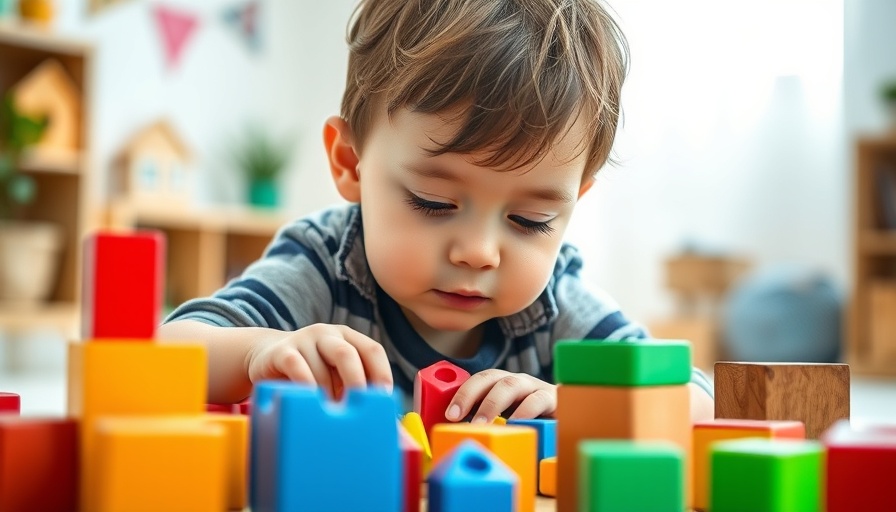
Unlocking Imagination: The Essential Advantages of Creative Play for Early Development
Children possess an incredible ability to transform the ordinary into extraordinary adventures. A mere cardboard box can morph into a spaceship, while a stick can become a magic wand. These seemingly playful experiences are not just moments of entertainment; they play a pivotal role in a child's early development, fostering a myriad of essential skills. In this article, we will delve into the significant benefits of creative play, explore its vital role in cognitive development, and provide practical suggestions to encourage imaginative activities for your children.
The Significance of Creative Play
Creative play pertains to open-ended imaginative activities that encourage exploration, experimentation, and self-expression. Unlike structured play, which often involves rules and predefined outcomes, creative play allows children to invent worlds and ask, "What if?" Activities such as building with blocks, drawing, or engaging in role-playing are prime examples of creative play that nurture curiosity, critical thought, and socialization.
The Multifaceted Benefits of Creative Play
The benefits of creative play are profound and multifaceted, impacting children's cognitive, social, physical, and emotional development.
1. Fostering Problem-Solving Skills
Imaginative tasks such as constructing a rocket from blocks or devising a plan to escape a dragon foster critical problem-solving skills. These playful challenges drive children to test various ideas, allowing them to learn from small mistakes and devise clever solutions. Each problem they solve enhances their toolkit for addressing real-world challenges, laying a foundation for resilience and adaptability.
2. Enhancing Critical Thinking
Creative play ignites curiosity and encourages children to pose questions about their environment. Inquisitive children who ponder the mechanics of a fairy's zigzag flight engage in critical thinking. The practice of exploration develops their analytical skills and decision-making abilities as they navigate their imaginative worlds.
3. Boosting Memory and Focus
As children engage in imaginative scenarios, they sharpen their memory and concentration skills. Remembering the nuances of a colorful castle or the steps in a secret recipe is not just fun; it cultivates a keen attention to detail that is crucial in both play and educational settings. Enhanced focus allows children to filter out distractions, boosting their self-confidence as they navigate both their imaginary and real-world environments.
4. Language Development
Creative storytelling is a vital aspect of language acquisition. As children create narratives, name characters, and interact with imaginary companions, they expand their vocabulary and communication skills. This interactive process is crucial for building linguistic confidence that will benefit their academic journeys.
5. Social Skills and Emotional Expression
Through creative play, children learn to collaborate, share ideas, and articulate their feelings. Engaging with peers in imaginative scenarios enhances their social confidence and communication skills, fostering their ability to articulate thoughts and navigate interpersonal relationships. Furthermore, creative play serves as an emotional outlet, allowing children to explore and express complex feelings in a supportive environment.
6. Physical Development
Creative play is not limited to cognitive or emotional benefits; it also promotes physical development. Activities that involve building, crafting, or even role-playing enhance fine motor skills and hand-eye coordination, which are critical for future tasks such as writing or participating in sports.
Encouraging Creative Play: Practical Insights
Fostering a creative play environment does not require extensive resources. Incorporating everyday materials—such as recycled objects, fabrics, or art supplies—can spark imaginative activities. Providing opportunities for children to explore freely encourages them to engage in safe risks and discover new ideas.
Creating a playful atmosphere at home or within educational settings allows for spontaneous exploration. Follow your child’s lead and interact with them during play, reinforcing their imaginative ideas while developing emotional and social skills. Not only does this promote creativity, but it also strengthens your bond with them.
Conclusion
Ultimately, creative play is not merely a pastime; it is a fundamental component of early childhood development. By actively encouraging imaginative activities, parents and educators can lay the groundwork for a child's future success across multiple facets of life. So, gather some simple materials, spark your child’s imagination, and watch as they develop into curious, confident individuals.
 Add Row
Add Row  Add
Add 




 Add Row
Add Row 

 Add
Add
Write A Comment